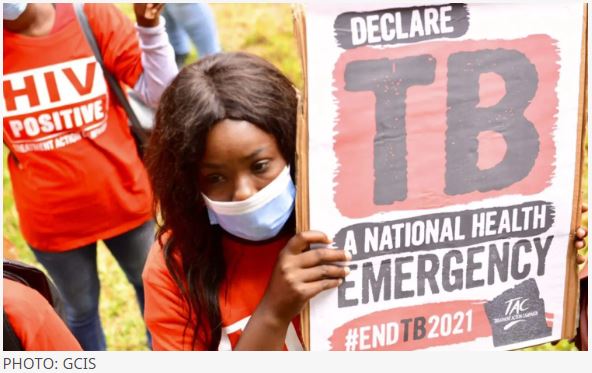


Prof Dheda interview on exercise-induced asthma
29th July 2019Cape Town’s pollen level spike cause for concern
3rd September 2019By Professor Richard van Zyl-Smit | September 2nd, 2019 | News, Prevention
The original and great hope with electronic cigarettes was that they would be an ideal way to stop smoking – mimicking the hand-mouth tactile aspect of smoking – providing nicotine and no other harmful chemicals – thus allowing the smoker to break the habit.
This hope has literally gone up in smoke as tobacco companies, entrepreneurs, advocates and unscrupulous opportunists have joined the fray, in what is now a multi-billion dollar industry.


The mantra of “safer than tobacco” is widely spread and unfortunately interpreted as “safe” – a message that marketers hope we will hear – but in truth it is only half the story; It is never good in marketing to confuse people with more than one message… and here lies the problem – who do you trust? Who is funding the industry? Who stands to lose or gain from e-cigarette sales? Are they really acting in your best interests?
The primary starting point when looking at e-cigarettes is the indisputable fact that tobacco cigarettes kill. End of story. Roughly 14 years of life lost for 50% of smokers, emphysema, heart disease, stroke, cancer etc. etc. There is nothing good about smoking – but it is a very low bar if you wish to find something “safer”. If electronic cigarettes only killed 45% of users – they would be safer. This is where things get messy – safer is not safe. Much of the debate surrounds the “95% safer” we see it in marketing – but this is very much “marketing speak”. The USA take a very different stance to the UK on the safety of electronic cigarettes, and in South Africa we tend to be exposed to the UK promotion of e-cigarettes rather than the USA.
There are many papers published on electronic cigarettes demonstrating that they are not 100% safe. Increased risk for infections, lung disease, the presence of cancer-causing drugs all points towards a picture of “safer than” but certainly not safe. So many advocates will argue that nothing is 100% safe. Which is true – but this is a multi-billion Dollar industry that is essentially unregulated and advocating a product that has not undergone health, food, industrial evaluation. E-cigarettes are just “safer than tobacco” – to not belabour the point – this is not synonymous with “safe”.
Underneath the veneer of the “saving lives” of tobacco smokers, and the “safer alternative” are a few important narratives that need to be brought to the surface when deciding if vaping is a good idea or not: Firstly, most large tobacco companies own e-cigarette companies and in South Africa Philip Morris has just bought out Twist. And with the tobacco companies involved the waters are very difficult to navigate. The tactics of the tobacco industry to promote smoking, quash any opposition to advertising, restrictions or bans etc. are well documented in many articles, new stories and documentaries. It has been cynically argued that keeping addicted smokers alive for as long as possible is good for business – why would you want your loyal clients to die?
Which brings us to the latest flash point in the e-cigarette story. The City of San Francisco banned the sale of e-cigarettes recently, this the home town of JUUL the leading e-cigarette brand in the US – a 16 Billion dollar company. The CEO of JUUL recently stated on camera that: “he apologised to parents of addicted JUUL users… it was never their intention for children to use them… and he hoped it was nothing they did…” JUUL developers changed the formulation of the nicotine in JUUL to a nicotine salt (rather than a free base form) which is rapidly absorbed and increases nicotine addiction, and they directly marketed to adolescents with their marketing campaigns.
And it is not only the industry that leads us astray. Recently published in the New England Journal of Medicine is a paper concluding the vaping is more effective at stopping smoking than nicotine replacement therapy. However, if you look at the details deep in the manuscript, close on 80% of the people who stopped smoking using an e-cigarette were still vaping. This is a “switch study” not a “cessation study”. Technically they are correct as the participants are not smoking, but this academic deceitfulness. A single conclusion is made: “more stopped smoking”, but this is only half the story. In marketing you never give two messages.
Despite the hype, confusion, differing perspectives there are few aspects that are pretty clear: Nicotine is an addictive substance and adolescents are particularly at risk for becoming addicted. The flavourings make the experience of vaping more pleasurable than smoking, increasing the chances that they will have a second or third… The chemicals in electronic cigarette – particularly the flavours are not designed to be heated to over 200oC and inhaled – they are designed to be added to food and eaten. Cinnamon is one flavour that is of great concern having been shown to damage the cilia (fine hairs) in the lung. Diacetyl, the buttery flavour used in popcorn resulted in a fatal lung condition in popcorn factory workers and has been found in certain e-cigarettes. It would seem obvious that safe for cooking and eating does not equate to safe after heating and inhaling?
There is no doubt that smoking is a disaster, and we need to do everything we can to assist smokers to stop and for non-smokers not to start. Advocating that adolescents and non-smokers take up vaping is just an industry looking for consumers of an addicting and potentially dangerous past time. Somebody is lying, others hiding the truth behind a single message and a group of companies making billions in the process. Be careful when reading or listening to discussions and arguments around the harms/benefits of vaping. Always follow the money trail when in doubt. Be certain that inhaling anything more than fresh air is dangerous for your health and think hard if you really want to spend money paying to do so!
The dangers of e- cigarettes: first and second hand inhalation are not to be sniffed at. See latest survey results – ‘Exposure to second-hand e-cigarettes increasing among young people.’
Latest news update on vaping and marijuana
https://www.allergyfoundation.co.za/vaping-you-are-being-lied-to-but-by-whom/



